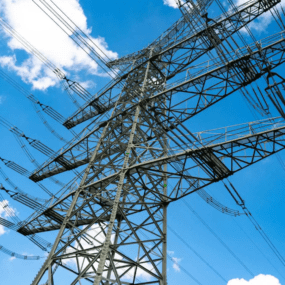A look inside Puget Sound Energy’s time-varying rates pilot program
Puget Sound Energy’s (PSE) time-varying rates (TVR) pilot saw 94% of enrolled participants take action to reduce energy usage during the winter season on-peak periods during its first year.

Puget Sound Energy’s (PSE) time-varying rates (TVR) pilot saw 94% of enrolled participants take action to reduce energy usage during the winter season on-peak periods during its first year.

Sign up for our newsletter
Stay in the loop with all things GridX and beyond.
Puget Sound Energy’s (PSE) time-varying rates (TVR) pilot saw 94% of enrolled participants take action to reduce energy usage during the winter season on-peak periods during its first year.
Uplight, a clean energy technology company, and GridX, an enterprise rate platform provider to utilities, were both involved in the pilot. The pilot leveraged Uplight’s Rates Engagement solution and GridX’s Enterprise Rate Platform, to provide personalized rate education, streamline enrollments, and increase load shift during times of peak strain on the grid, the companies said.
TVRs are a tool meant to help utilities manage electricity demand, reduce stress on the power grid, and achieve clean energy and decarbonization goals. Yet nearly half of all residential customers are unsure what type of electricity plan they are on, according to a report from the Smart Energy Consumer Collaborative. And, though 79% of residential customers have access to TVR nationwide, only 9% of TVR-eligible customers have enrolled.
PSE launched the TVR Pilot in October 2023 to gauge customer willingness to participate in various TVR rate programs and to address the TVR participation gap. PSE partnered with Uplight and GridX to manage customer recruitment and provide ongoing rate coaching to educate customers about what TVR means for them, how their behavior impacts the cost of energy, and how to save money on their bills. Uplight recruited residential customers for one of three TVR rate designs using personalized rate education reports and rate comparison tools featuring shadow billing and “what-if” scenarios.
In the first year of the program, over 5.2% of residential Rate Energy Report recipients enrolled in the pilot, exceeding recruitment targets for each of the three time-of-use (TOU) rate variants. In addition to driving TVR enrollments, survey data from the first year of the pilot also revealed that participants found Uplight and GridX’s tools played an “integral role” in increasing their TOU literacy and encouraging rate-shifting behaviors, as well as:
- 94% of TOU participants used the Rate Advisor tool to evaluate rate options
- 88% found rate comparisons easy to understand
- 84% said rate comparisons influenced their enrollment decision
- Participants received “Rate Coach” emails meant to help them build load-shifting habits, manage utility bills, and succeed on their new TOU rate
- Over 80% of Rate Coach recipients correctly identify morning and evening on-peak periods during the winter TOU season
- These weekly update emails also received high recall scores (90%) and high usefulness scores (90%)
- Among customers who took action to reduce their energy usage during winter on-peak periods, 72% said it was easy
- Customers took action with 73% of EV drivers shifting their charging schedule, 80% of participants adjusting laundry, and 72% adjusting dish washing schedule
“At Puget Sound Energy, we’re dedicated to helping our customers achieve their energy goals and lower their bills,” said Aaron August, senior vice president and chief customer and transformation officer at PSE. “That’s why we’re excited to partner with Uplight and GridX to provide personalized energy insights and incentives that empower our customers to take control of their energy usage. By putting our customers at the center of everything we do, we’ve not only met but exceeded our targets in this pilot program, and we’re committed to continuing to innovate and improve our services to meet their evolving needs.”
Utilities exploring opt-out time-varying rates landed among ten of the top grid modernization trends of 2023, according to a report from the N.C. Clean Energy Technology Center (NCCETC). Time-variable pricing (TVP) — in which electricity prices vary at different times of day (and often seasonally) — is also widespread in the electricity markets. Most utilities offer at least one TVP option for any given customer class. These often include simple time-of-use (TOU) rates, where prices move at set times and amounts through the day—generally with an afternoon peak period, overnight off-peak hours, and two “shoulder” periods in the hours in between.
Read the original article from Power Grid




